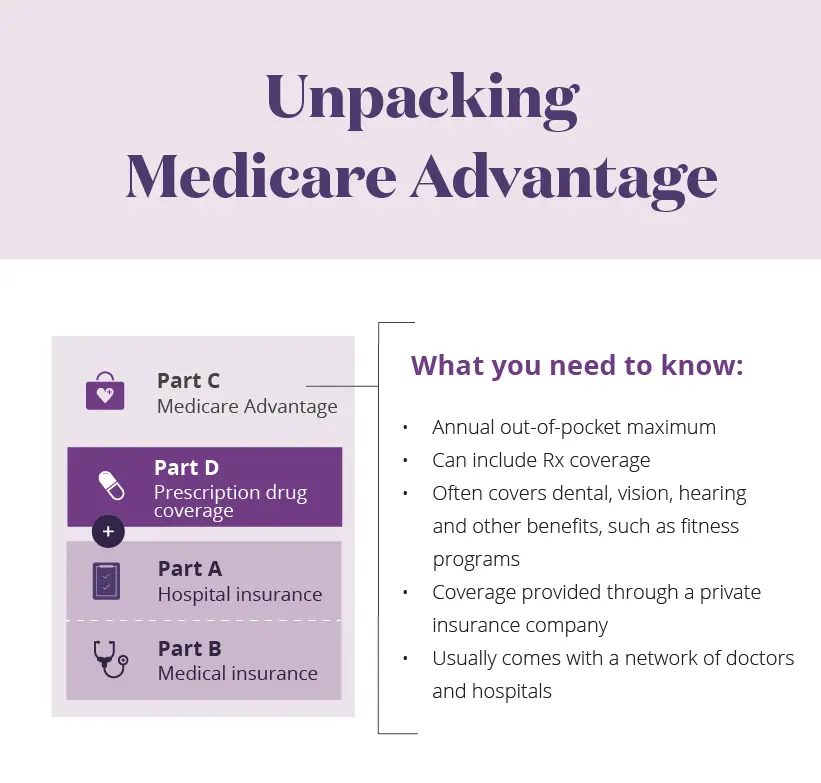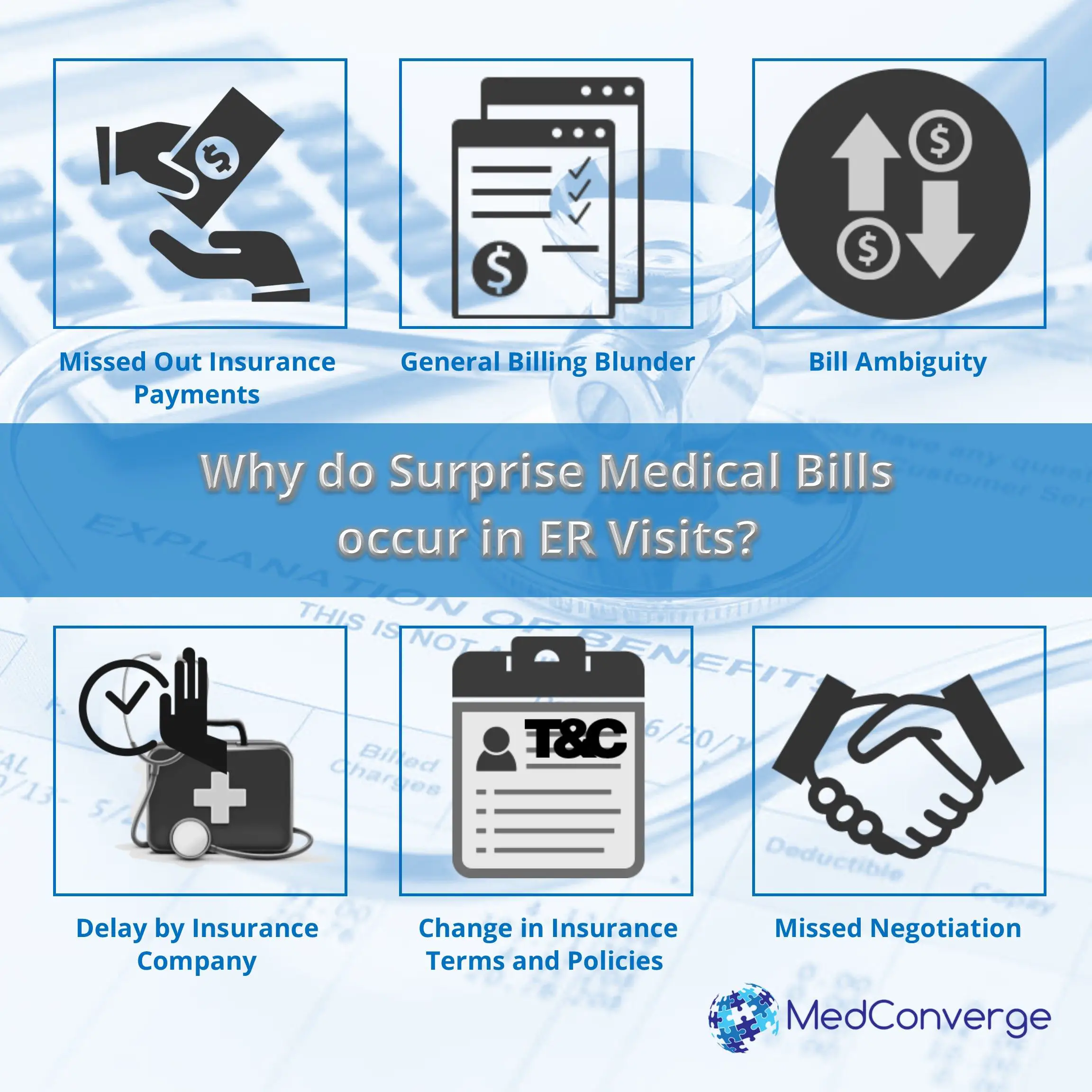When Will Part A Cover Emergency Room Visits
Although Part A doesnt always cover emergency room visits, there are situations where it will. Specifically, if you are admitted to the same hospital within three days of your initial emergency room visit. In this case, your emergency room visit is considered to be part of your inpatient stay, so it will be covered by Part A, just like the rest of your hospital visit.
If you are admitted to the hospital under this circumstance, you wont be responsible for any copayment.
Can I Get Help Paying
If you need help paying for your share of your emergency department bill regardless of whether Medicare Part A or B was applied you may be able to use additional coverage if youve signed up for a Medicare supplement plan. Medicare supplement plans can only be purchased if you have Original Medicare . If you have a Medicare Advantage plan, you will need to leave that policy.
Costs of Medicare supplement plans vary based on which plan you choose. Medicare supplement plans can be used to cover costs such as deductibles, copayments and coinsurance that are not covered by Original Medicare.
Can I Enroll In Medicare Part B At Any Time
To enroll in Medicare Part B you must have a valid enrollment period.When you first become eligible for Medicare, you are given an Initial Enrollment Period. If you do not enroll during this time, you must wait until the General Enrollment Period to enroll in coverage. The only exception to this is if you qualify for a Special Enrollment Period.
If you qualify for a Special Enrollment Period, this means that you receive an individualized time to enroll in Medicare Part B without penalty based on a special circumstance. It is essential to utilize these opportunities if you have the chance. If you do not have a Special Enrollment Period, you may be required to pay a Medicare Part D late enrollment penalty.
You May Like: Does Original Medicare Cover Prescription Drugs
Also Check: How Much Is Medicare Supplement Plan F
What Does Part A Cover
Medicare Part A covers hospital or inpatient care.
A person usually visits the ER at a hospital. However, there is a difference between emergency care at a hospital and being a hospital inpatient.
Medicare Part A specifically covers care when a person stays as an inpatient at the hospital. Medicare considers a person an inpatient when their stay has extended beyond two midnights.
If a doctor admits a person to the hospital, the law requires that they notify the individual that they are an inpatient.
What Is The Copay For Medicare Emergency Room Coverage

A copay is the fixed amount that you pay for covered health services after your deductible is met. In most cases, a copay is required for doctors visits, hospital outpatient visits, doctors and hospital outpatients services, and prescription drugs. Medicare copays differ from coinsurance in that they’re usually a specific amount, rather than a percentage of the total cost of your care.
Medicare does cover emergency room visits. You’ll pay a Medicare emergency room copay for the visit itself and a copay for each hospital service. It is important to remember, however, that your actual Medicare urgent care copay amount can vary widely, depending on the services you require and where you receive care.
If you are admitted for inpatient hospital services after an emergency room visit, Medicare Part A does help cover costs for your hospital stay. Medicare Part A does not cover emergency room visits that don’t result in admission for an inpatient hospital stay.
You May Like: Is Ilumya Covered By Medicare
Will Medicaid Pay For An Er Visit Out Of State
Emergencies can happen anytime, including when youre visiting another state.
There are four instances in which a state Medicaid program must provide coverage and care to a beneficiary who lives in another state.
If one of the above criteria applies to your emergency room visit, you will likely receive Medicaid coverage for the care. It should be noted that states have some broad flexibility in how they determine out-of-state payment rates.
When Does Medicare Part A Cover Emergency Room Visits
Medicare does cover emergency room visits, but the form of that coverage varies based on whether or not a doctor decides to admit you to a hospital.
If youre admitted, Medicare Part A can cover your ER visit and inpatient hospital stay for a maximum of 90 days, as long as the hospital accepts Medicare. If you need more time, you could qualify for up to another 60 days of coverage through lifetime reserve day use. This means that people can get a total of 60 additional days in the hospital throughout their lifetimes.
Usually, Part A only covers emergency room visits if you stay in the hospital for an entire night and a doctor signs an order formally admitting you. However, coverage only takes effect if youre admitted to the hospital that the emergency room is attached to. If you go to another hospital, the emergency room visit will be covered by Part B instead.
Recommended Reading: What Is A Medicare Bnc Number
What To Do If You Face A Medical Emergency
If you are facing a medical emergency, get emergency care from the nearest hospital that can help you, recommends the U.S. Centers for Medicare and Medicaid Services. Emergency rooms cannot turn you away based on your health care insurance or not having insurance. Your insurance company also canât charge you more if you get emergency room care from an out-of-network hospital. This is because of the Emergency Medical Treatment & Labor Act , enacted in 1986, which ensures public access to emergency services regardless of ability to pay.
Get Help Covering Your Emergency Room Copay
If you’re worried about a trip to the emergency room adding expensive and unpredictable costs to your health care budget, consider joining a Medicare Supplement Insurance Plan. Medigap is private health insurance that Medicare beneficiaries can buy to cover costs that Medicare doesn’t, including some copays. All Medigap plans cover at least a percentage of your Medicare Part B coinsurance or ER copay costs.
To find a Medigap plan in your area, call to connect with a licensed insurance agent.
Recommended Reading: Is Tori Removal Covered By Medicare
Open Enrollment: Your Time To Join Switch Or Drop A Plan
There is an open enrollment period every year when you can join, switch, or drop a Medicare plan. From October 15 through December 7, 2022, Medicare beneficiaries can review how they receive their Medicare coverage for 2023, says Judith A. Stein, executive director at the Center for Medicare Advocacy in Willimantic, Connecticut.
According to Medicare.gov, you can do any of the following during open enrollment:
- Change from Original Medicare to a Medicare Advantage Plan
- Change from a Medicare Advantage Plan back to Original Medicare
- Switch from one Medicare Advantage Plan to another Medicare Advantage Plan
- Switch from a Medicare Advantage Plan that doesnt offer drug coverage to a Medicare Advantage Plan that offers drug coverage
- Switch from a Medicare Advantage Plan that offers drug coverage to a Medicare Advantage Plan that doesnt offer drug coverage
- Join a Medicare drug plan
- Switch from one Medicare drug plan to another Medicare drug plan
- Drop your Medicare drug coverage completely
Whether you are in Original Medicare with a Part D prescription drug plan, or enrolled in a private Medicare Advantage plan, all beneficiaries should make sure their current plan will meet their needs in the coming year.
What Is Medicare Part B
Medicare Part B is the part of Original Medicare that covers doctors visits, outpatient care, and durable medical equipment. Medicare part B covers preventative and medically necessary services that you receive under the supervision of a Medicare-accepting physician.
Once you enroll in Medicare Part B, you become eligible to enroll in a Medicare Supplement plan or a Medicare Advantage plan.
Medicare Supplement plans help cover the costs left behind by Original Medicare. Since you are not covered at 100% by Original Medicare, these Medicare Supplement plans help you create individualized full coverage benefits while still utilizing Original Medicare benefits. Medicare Supplement plans can cover the Medicare Part B coinsurance, so you are not left covering this out-of-pocket cost.
Also Check: Does Medicare Cover Walking Canes
You May Like: Does Aarp Offer Medicare Supplement Insurance
Medicare Advantage And Emergency Room Visits Coverage
Medicare Advantage plans can help with emergency room visit coverage. Although Medicare Advantage plans usually operate within provider networks, the law requires they offer coverage equal to or better than the original Medicare plans . So, if you have a Medicare Advantage plan and require an emergency room visit to a facility outside of your provider network, Medicare will cover a portion of your care.
The amount covered depends on which Medicare Advantage plan you have. Check your plan particulars for how much you would pay for your deductible, copay and coinsurance for emergency room visits.
If you live with a medical condition or are susceptible to illnesses that could require frequent emergency room visits, a Medicare Advantage plan may be the right choice, providing more coverage and flexibility.
No one plans to visit the emergency room. However, understanding your current health situation, along with the possible costs associated with an ER visit, can help you make the best Medicare plan choice for your lifestyle and your wallet.
What Medicare Part B Covers

Medicare Part B is known as medical insurance and helps cover medically necessary services and preventive services, which can include:
- Doctors office visits
- Durable medical equipment
- Mental health services
Medicare Part B may also cover services you receive when you visit the emergency room as an outpatient.
Medicare Part B is optional, and if you enroll in Part B you must also enroll in Part A. Unlike Medicare Part A, which is premium-free for most people, you must pay a monthly premium for Medicare Part B.
The standard Part B premium in 2021 is $148.50 per month.
Read Also: Can A Widow Get Medicare At Age 60
How Much Does Medicare Pay For An Emergency Room Visit
Original Medicare will cover a portion of your visits to the emergency room, but whether or not you are admitted will determine if Part A or Part B coverage is used. In either case, you pay a portion of your cost for services, but Medicare pays the majority.
If you have a Medicare Advantage plan, your ER visit will be covered and the plan you choose will determine your out-of-pocket costs. You may also have to pay more for visiting doctors or facilities that are outside your plans network.
Emergency Room Costs With Medigap
Medigap, a Medicare insurance supplement, is available only for people enrolled in original Medicare. A person with a Medicare Advantage plan is not eligible to enroll in Medigap.
Medigap pays some of the out-of-pocket costs of Medicare parts A and B, including those for emergency room visits.
In addition, some Medigap plans offer coverage of foreign ER visits. This area of coverage is broader than the limited coverage of original Medicare and Medicare Advantage.
However, a requirement for this coverage is that emergency care must begin during the first 60 days of a persons trip. The coverage has a lifetime limit of $50,000. Out-of-pocket expenses in 2021 include a $250 annual deductible and 20% of billed charges for medically necessary emergency care.
Medigap plans C, D, F, G, M, and N offer this benefit. Although plans E, H, I, and J are no longer available for purchase, an individual with one of these plans also receives foreign emergency care coverage.
An individual may need a combination of Medicare parts A and B to cover aspects of an emergency room visit. The following are some example scenarios:
Scenario 3
Scenario: Someone is in the ER, and a doctor writes an order to admit them to the hospital.
What pays: Part A pays for the hospital stay and the services received when the individual was an outpatient. However, Part B pays for doctors services.
Also Check: What Is The Best Medicare Advantage Plan In Alabama
How Does Medicare Cover Emergency Room Visits
Medicare offers coverage for emergency room visits, but your cost-sharing responsibility will depend on your admission status, recommended treatment, and what kind of Medicare plan youre enrolled in. Today, well review a few situations to prepare you for emergency room copays better.
Check here for Medicare Plan Comparison 2023.
How Much Of An Emergency Room Visit Is Covered By Medicare
Does Medicare completely cover emergency room visits? Unfortunately, no.
Expect to pay part of the total cost of each emergency room visit and any hospital services administered during your stay. The amount that you pay is known as a copay.
In addition, you will also pay a portion of the doctor’s services charged during your emergency room visit.
Keep in mind that you will first need to pay your Medicare plan’s deductible. Once this deductible is met, your plan begins to cover a portion of your emergency room costs.
Medicare Part A will only cover emergency room visits if hospital admittance is required. This means you could expect to cover 100% of the cost for an emergency room visit including all expenses associated with both doctor and hospital services if you don’t need to be admitted.
Medicare Part B typically covers 80% of charges for doctor services during an emergency room visit. This means you are expected to cover the remaining 20%.
Read Also: Can I Find My Medicare Number Online
What Is The Medicare 100 Day Rule
Medicare covers up to 100 days of care in a skilled nursing facility each benefit period. If you need more than 100 days of SNF care in a benefit period, you will need to pay out of pocket. If your care is ending because you are running out of days, the facility is not required to provide written notice.
Find A $0 Premium Medicare Advantage Plan Today
Copyright 2022 TZ Insurance Solutions LLC. All rights reserved.
For California residents, CA-Do Not Sell My Personal Info, .
MedicareAdvantage.com is a website owned and operated by TZ Insurance Solutions LLC. TZ Insurance Solutions LLC and TruBridge, Inc. represent Medicare Advantage Organizations and Prescription Drug Plans having Medicare contracts enrollment in any plan depends upon contract renewal.
The purpose of this communication is the solicitation of insurance. Callers will be directed to a licensed insurance agent with TZ Insurance Solutions LLC, TruBridge, Inc. and/or a third-party partner who can provide more information about Medicare Advantage Plans offered by one or several Medicare-contracted carrier. TZ Insurance Solutions LLC, TruBridge, Inc., and the licensed sales agents that may call you are not connected with or endorsed by the U.S. Government or the federal Medicare program.
Plan availability varies by region and state. For a complete list of available plans, please contact 1-800-MEDICARE , 24 hours a day/7 days a week or consult www.medicare.gov.
Medicare has neither reviewed nor endorsed this information.
Don’t Miss: Will Medicare Pay Me For Taking Care Of My Mother
What Are Common Emergency Room Wait Times
Emergency room wait times vary according to hospital and location. Patients in the ER are seen based on how serious their condition is. This means that the patients with life-threatening conditions are treated first, and those with non-life threatening conditions have to wait.
To help reduce ER wait times, health care facilities encourage you to plan ahead for care, so when youre sick or hurt, you know if the ER is right for your medical condition.
An emergency room visit can take up time and money if your problem is not life-threatening. Consider other care options, such as an urgent care center, convenience care clinic, your doctor, or a virtual doctor visit all of which could be faster and save you money out of your own pocket if the medical problem is non-life threatening.
If you have health insurance, be sure to check your plan documents to see what types of care options are eligible for coverage under your plan, including whether or not you need to stay in your plans network.
How Much Does An Emergency Room Visit Cost

In 2019, the average price for an emergency room visit was $1,055. For those with health insurance, the average out-of-pocket payment was $275. One reason why an ER visit is so costly is due to higher severity services.
Between 2012 and 2019, high severity visits to the ER increased by 13%. The higher the severity, the more expensive the visit is. Below is a table of the Emergency Severity Index that shows the five different levels of severity.
| Level | ||
| Cardiac arrest Massive blood loss | ||
| 2 | Cardiac-related chest pain Asthma attack | |
| 3 | Stable, multiple types of resources required | High fever with cough abdominal pain |
| 4 | Stable, one type of resource required | Simple laceration pain on urination |
| 5 | Stable, no anticipated resources required | Rash Prescription refill |
Don’t Miss: When Can You Change Your Medicare Supplement Plan
Can Medigap Help With Emergency Room Coverage
Medigap plans, or Medicare Supplement plans, can help with your emergency room coverage under specific circumstances. While Medigap plans dont cover medical care directly, they do help you pay for your deductibles, copayments, and coinsurance payments. If you are admitted to the emergency room as an outpatient and covered under a Part B plan, then your Medigap plan may be able to help you cover your deductible, copayment, coinsurance, or various other fees.
There are many Medigap plans out there, so you should make sure that the one that you have covers the relevant fees.